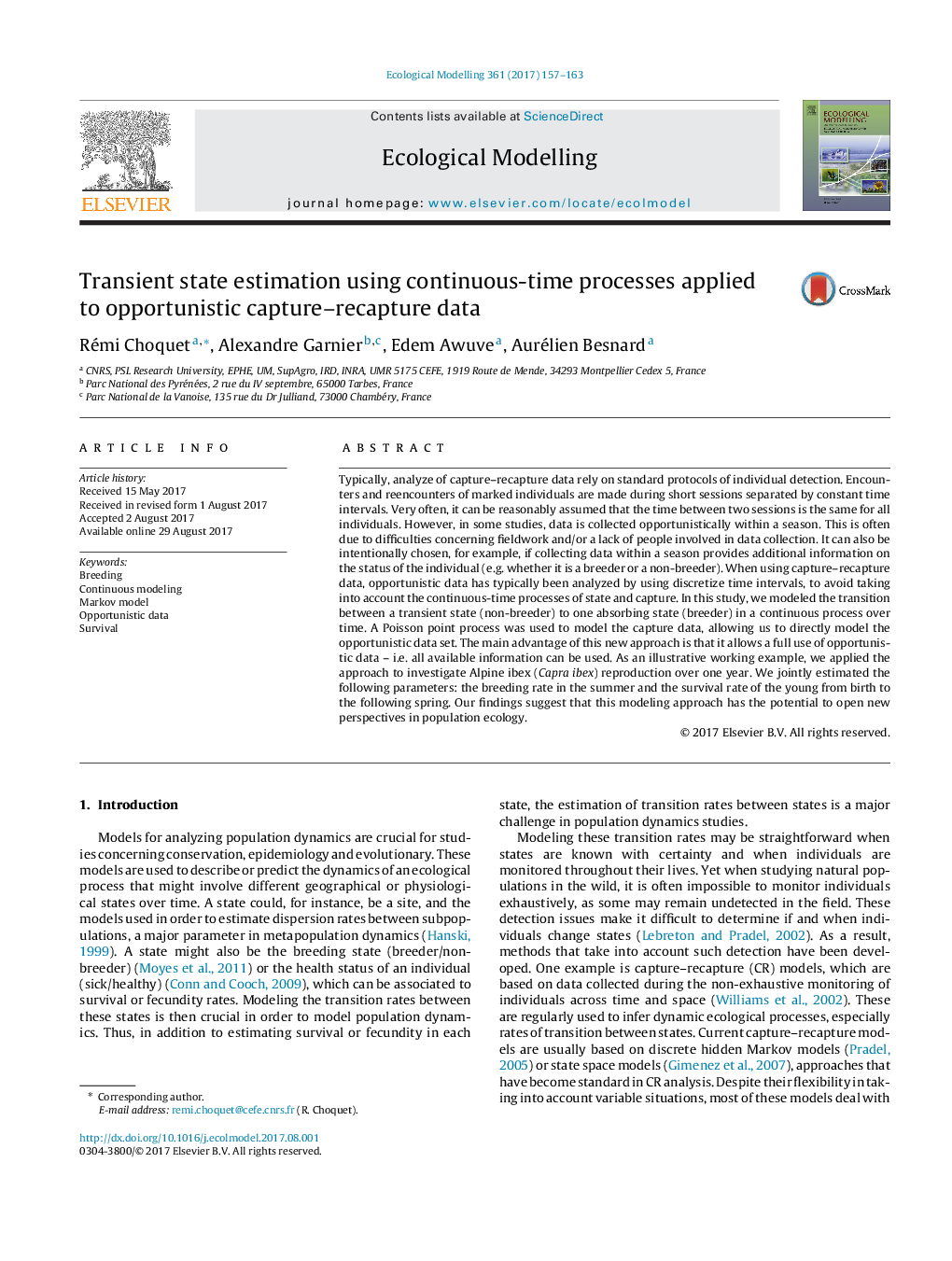| Article ID | Journal | Published Year | Pages | File Type |
|---|---|---|---|---|
| 5742002 | Ecological Modelling | 2017 | 7 Pages |
â¢In some studies, capture-recapture data is collected opportunistically within a season.â¢To allows a full use of opportunistic data, we modeled the transition between a transient state to one absorbing state in a continuous process over time.â¢We applied the approach to investigate Alpine ibex (Capra ibex) reproduction over one year.â¢We jointly estimated the breeding rate in the summer and the survival rate of the young.
Typically, analyze of capture-recapture data rely on standard protocols of individual detection. Encounters and reencounters of marked individuals are made during short sessions separated by constant time intervals. Very often, it can be reasonably assumed that the time between two sessions is the same for all individuals. However, in some studies, data is collected opportunistically within a season. This is often due to difficulties concerning fieldwork and/or a lack of people involved in data collection. It can also be intentionally chosen, for example, if collecting data within a season provides additional information on the status of the individual (e.g. whether it is a breeder or a non-breeder). When using capture-recapture data, opportunistic data has typically been analyzed by using discretize time intervals, to avoid taking into account the continuous-time processes of state and capture. In this study, we modeled the transition between a transient state (non-breeder) to one absorbing state (breeder) in a continuous process over time. A Poisson point process was used to model the capture data, allowing us to directly model the opportunistic data set. The main advantage of this new approach is that it allows a full use of opportunistic data - i.e. all available information can be used. As an illustrative working example, we applied the approach to investigate Alpine ibex (Capra ibex) reproduction over one year. We jointly estimated the following parameters: the breeding rate in the summer and the survival rate of the young from birth to the following spring. Our findings suggest that this modeling approach has the potential to open new perspectives in population ecology.
